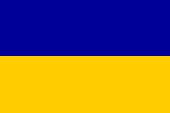|
|
 Within preparing to the second workshop on creation of scenario for
development of the city heating system of Bila Tserkva till 2025,
a working meeting of ERAIHM project partners dedicated to preliminary assessing
of the alternative visions and scenarios generated by the backcasting method
was held on 6-7 September, 2012. On this event, the KTH (Stockholm, Sweden) was
represented by Dr. Olga Kordas and TU Delft (the Netherlands) - by Dr. Jaco Quist.
Within preparing to the second workshop on creation of scenario for
development of the city heating system of Bila Tserkva till 2025,
a working meeting of ERAIHM project partners dedicated to preliminary assessing
of the alternative visions and scenarios generated by the backcasting method
was held on 6-7 September, 2012. On this event, the KTH (Stockholm, Sweden) was
represented by Dr. Olga Kordas and TU Delft (the Netherlands) - by Dr. Jaco Quist.
The documents created as the outcomes of the May creative workshop in Bila Tserkva were
analysed. First of all, the summary data prepared on the base of analysis of stakeholders'
opinions were discussed. In course of processing of interviews, a very high level of
stakeholders' expectations regarding the results of implementing of backcasting was
pointed out. At the same time, the ideas on approaches to desirable changing of existing
situation in city heating occurred rather fragmentary and often mutually contradicting.
The absence of bodies representing the consumers of the mentioned service among those asked
has been revealed.
An attempt to distinguish the criteria for estimation of the situation in this sector,
actual trends and motivations of different actors has been made. For determinacy,
we decided to limit our consideration with the key stakeholders and key items to which
their agreement or disagreement was attributed. All factors have been ranged according to
their influence on the heating system and analysed according to signs impact-predictability.
The key options have been extracted for the scenarios under development: district heating
centralisation level, types of used resources and type of property. Starting from this origin,
the basic-level working out of three versions
 of heating network development in conditions
of diversified energy sources was carried out in the course of the backcasting exercise:
of heating network development in conditions
of diversified energy sources was carried out in the course of the backcasting exercise:
- centralised with keeping of public property;
- centralised in conditions of private property;
- decentralised in conditions of private property.
The essential differences in the prognosed trends of the city district heating development for
the above three cases have been distinguished. Also, the problem of formalising and deeper processing
of mentioned visions/scenarios was put forward. The necessity of their coordination with real quantitative
data on the state of heating networks in the city of Bila Tserkva, as well as matching with the statements
of the Energy Strategy of Ukraine for the Period till 2030.
|
|




 ERAIHM
ERAIHM







 ERAIHM
ERAIHM


